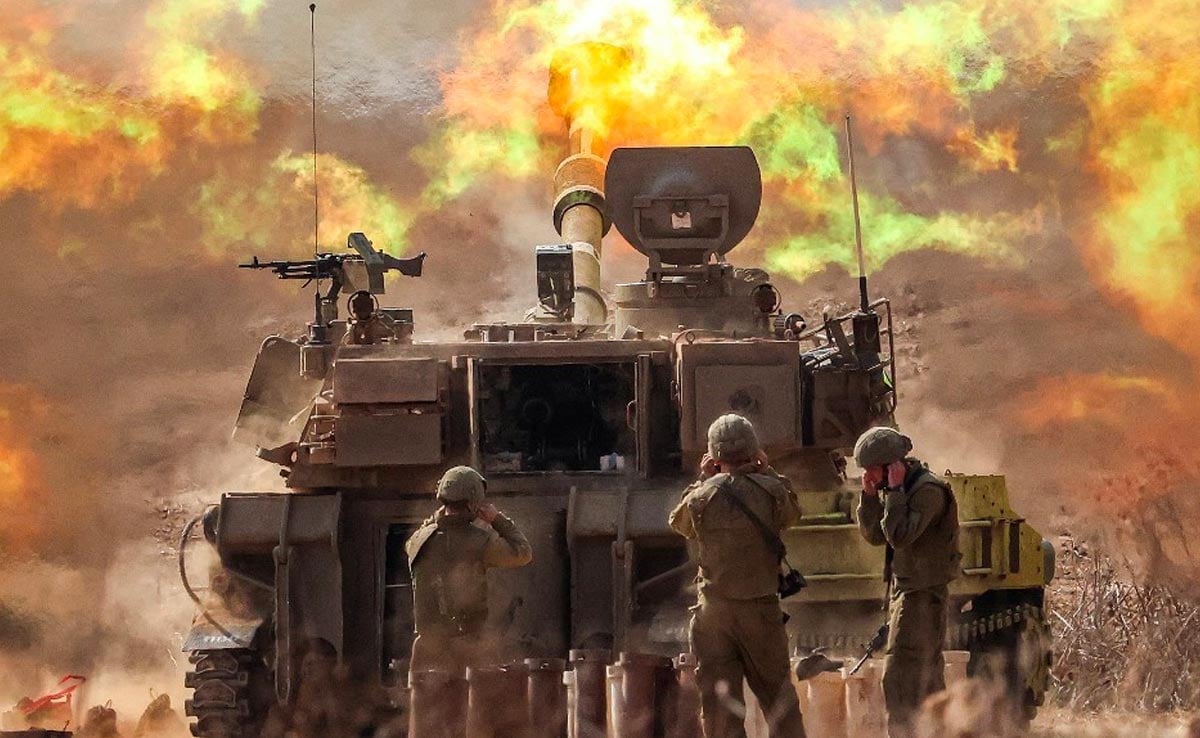
Israel has some of the most technologically advanced defences in the world.
Paris:
Israel has one of the best-resourced militaries in the world, hugely supported by Washington. In Hamas, it faces a highly-trained armed group with powerful regional allies.
With both sides poised for a ground offensive in the wake of the deadly attack by Hamas on October 7, here is an overview of their military resources.
Israel
The Israel Defense Forces (IDF) number 169,500, of which 126,000 are army, according to Britain’s International Institute for Strategic Studies (IISS).
On top of that, it has 400,000 reservists, of which 360,000 have been mobilised since the Hamas attack.
Israel has some of the most technologically advanced defences in the world, including the “Iron Dome” anti-missile system.
IISS says it has some 1,300 tanks and other armoured vehicles, 345 fighter jets and a vast arsenal of artillery, drones and state-of-the-art submarines.
Though not a declared nuclear state, Israel’s nuclear weapons cache is an open secret and the Arms Control Association puts its number of warheads at 90.
US ally
Washington currently provides $3.8 billion per year to Israel in military aid under a 10-year agreement running until 2028.
It has delivered increased munitions to Israel and deployed two aircraft carriers to the eastern Mediterranean — the USS Gerald Ford, the world’s largest warship, and the USS Eisenhower, aimed at deterring not just Hamas but also its allies in Iran and Hezbollah.
British defence analysis firm Janes said US aircraft carriers travel with smaller ships — destroyers, cruisers, submarines and support vessels — that offer a multitude of capabilities including ballistic missile protection, command-and-control, humanitarian assistance, evacuation and disaster relief.
“Another aircraft carrier adds another 95,000 tons of power projection to the point that the United States is making,” said Janes expert Nick Brown.
Hamas
Hamas has a diverse arsenal built up over many years.
Its armed forces, under the name Al-Qassam Brigades, numbers 15,000 men according to IISS, though it notes Arabic media have put the figure at 40,000.
They have heavy weapons sourced from across the Middle East — particularly Iran, Syria and Libya — and has also sourced handguns and assault rifles from China and other regions.
It also has a variety of locally-made, improvised explosives and Western sources say enough drones, mines, anti-tank guided missiles, grenade launchers and mortar shells to hold out for a long period, though precise figures are unavailable.
The majority of its rockets are also locally manufactured and technologically rudimentary.
Hezbollah
There have already been exchanges across the border between Israel and Lebanon, where the Iran-backed militant group Hezbollah is based.
“Hezbollah can tie up IDF resources without having to fully commit to the fight, instead relying on occasional rocket or missile strikes to prevent the Israelis from growing complacent and forcing the IDF to commit manpower and materiel along the northern border,” said the Soufan Center, a US think tank.
In 2021, the group claimed to have 100,000 fighters. The Institute for National Security Studies (INSS), an Israeli think tank, says the number is half that.
Independent Middle East expert Eva Koulouriotis estimates Hezbollah has 20,000 highly trained fighters and a reserve of some 50,000 who have received three months of training in Lebanon and three months in Iran.
INSS says the group’s arsenal counts between 150,000 and 200,000 rockets and missiles, including “hundreds” of precision rockets.
Hezbollah simulated cross-border raids into Israel in May that involved weapons systems from Iran, Syria, Russia and China.
Iran
Since its Islamic revolution in 1979, Iran has made support for Palestinians one of the pillars of its ideology.
Foreign Minister Hossein Amir-Abdollahian warned in recent days: “No one can guarantee the control of the situation and the non-expansion of the conflicts” if Israel sends its soldiers into Gaza.
Raz Zimmt, of INSS, said Iran currently had “no interest in Hezbollah engaging in an all-out war” that might threaten such a key “strategic asset”.
But he added that Iran’s hand could be forced by “an Israeli ground invasion, and especially Israeli military success, which will threaten the very survival of Hamas and/or its ability to maintain effective control over the Gaza Strip.”
(Except for the headline, this story has not been edited by NDTV staff and is published from a syndicated feed.)




